Occupational Safety Training for Operating a Bench Grinder
99,000 ₫
Note: The above price is calculated for one person and may vary depending on the number of trainees participating in the course and market fluctuations. For more accurate pricing support, please refer to the price list or contact our consultants directly.
Occupational safety is an important issue when operating a bench grinder and needs to be addressed promptly to ensure the health and safety of workers and enhance the reputation of businesses here. The Occupational Safety Training course is one of the effective solutions to raise awareness on preventing workplace accidents for workers when operating a bench grinder.
Table of Contents
Toggle1. Overview of Bench Grinder
a. What is a Bench Grinder?
A bench grinder is a type of power tool specifically used for grinding, polishing, and cutting various materials, especially metal and stone. It is designed to be mounted on a workbench or another stable platform for use.
A bench grinder typically has two grinding wheels, each with a grinding or polishing disc. The grinding wheels are usually made of materials such as silicon carbide or alumina, which have high hardness for cutting and grinding materials. These wheels often have adjustable sizes and angles to meet specific needs.
Bench grinders are very useful in repair applications, metal fabrication, mirror making, ceramic polishing, and many other tasks. They help remove rough surfaces, cut to the correct size, and polish materials to achieve the desired final result. However, safety rules must be followed when using a bench grinder to avoid accidents and injuries.

b. Operating principle of a bench grinder
The operating principle of a bench grinder is quite simple. This machine uses two grinding wheels to remove unwanted material or polish the surface of the material. Below is a basic description of the bench grinder’s operating principle:
- Motor: A bench grinder has an electric motor (usually a single-cylinder motor) used to generate mechanical energy. The motor spins and transfers the motion to the two grinding wheels.
- Grinding wheels: Each wheel is a solid metal disc or composite grinding wheel containing abrasive or polishing particles. The wheels are fixed on the machine’s rotating shaft. A bench grinder may have one hard wheel (for grinding) and one soft wheel (for polishing), or both may be hard depending on the specific application.
- The material to be ground or polished is placed in front of the grinding wheel. When the grinder is activated, the wheel rotates quickly, generating grinding force and rapidly removing unwanted material from the surface or polishing it.
- Adjustment: A bench grinder can adjust the angle of the wheels, the distance between them, and various parameters to match specific grinding and polishing requirements.
- Safety: Using a bench grinder requires following safety rules, including ensuring that protective glasses and other safety equipment are used to protect the user from debris that may fly off during grinding.

c. Industries that use bench grinders
Bench grinders are widely used in many manufacturing industries and other tasks for grinding, cutting, and polishing materials. Below are some common industries and applications that use bench grinders:
- Metal fabrication: The metal manufacturing industry often uses bench grinders to smooth metal surfaces, remove irregularities, or cut parts to the correct size and shape.
- Mechanical engineering: In mechanical workshops, bench grinders are used to grind cutting tools, sharpening blades, and other parts to precise dimensions and shapes.
- Wood and woodworking: In the wood and furniture manufacturing industry, bench grinders are used to smooth surfaces, shine, and polish wood products, including furniture, decorations, and many other items.
- Aerospace industry: In manufacturing and maintaining aerospace components, bench grinders play a crucial role in preparing and maintaining parts and structures.
- Stone fabrication and processing: The stone fabrication industry uses bench grinders to polish and smooth the surface of natural or artificial stone products such as countertops, worktops, flooring surfaces, and more.
- Repair and maintenance: In repair and maintenance facilities, bench grinders are used to fix and maintain metal or wooden products.
- Jewelry wax modeling: Bench grinders can also be used in jewelry wax modeling to polish gemstones and diamonds.
2. Overview of Safety Training for Operating a Bench Grinder
a. What is occupational safety training?
- Occupational safety training for operating a bench grinder is a series of lessons providing awareness on how to prevent workplace accidents for workers. Accordingly, those working directly with bench grinders belong to Group 3.
- The occupational safety training course will help workers identify and avoid hazards, minimizing the risk of workplace accidents while working.
REGISTER FOR OCCUPATIONAL SAFETY TRAINING SERVICE
b. Training duration
Initial safety training duration
- Total training time is at least 24 hours, including the testing time.
- 8 hours of theory on the system of policies and laws on occupational safety and hygiene
- 8 hours of theory on basic knowledge of occupational safety and hygiene
- 4 hours of theory on specialized training content
- 2 hours of practice on specialized training content
- 2 hours of theory testing at the end of the training course
The safety training center will allocate the time into several training sessions depending on the arrangement of study time for employees. Normally, there will be 6 training sessions, with the course taking place over 3 days, provided that the manufacturing company can arrange continuous study time.
Periodic safety training duration
- Before the occupational safety card expires, workers who wish to renew it must undergo a periodic occupational safety training course, with the periodic safety training duration being at least 50% of the initial safety training duration.
Explanation: the total periodic occupational safety training time is at least 12 hours, including the testing time. After completing the periodic training course and passing the test, the worker will have their occupational safety card renewed.
c. Training content
| No. | TRAINING CONTENT | TRAINING TIME (HOURS) | |||
| Total | Including | ||||
| Theory | Practice | Test | |||
| I | System of policies and laws on occupational safety and hygiene | 8 | 8 | 0 | 0 |
| 1 | Overview of the system of legal documents on occupational safety and hygiene. | 6 | 6 | ||
| 2 | System of standards and technical regulations on occupational safety and hygiene. | 1 | 1 | ||
| 3 | Specific regulations of state management agencies on occupational safety and hygiene when constructing new, expanding, or renovating facilities for production, storage, and inspection of machinery, equipment, supplies, and substances subject to strict safety and hygiene requirements. | 1 | 1 | ||
| II | Basic knowledge of occupational safety and hygiene | 8 | 8 | 0 | 0 |
| 1 | Basic knowledge of hazardous and harmful factors in the workplace. | 4 | 4 | ||
| 2 | Methods to improve working conditions. | 1 | 1 | ||
| 3 | Safety culture in production and business. | 1 | 1 | ||
| 4 | Rights and obligations of employers and employees; policies and regimes on occupational safety and hygiene for employees; functions and duties of the occupational safety and hygiene network. | 1 | 1 | ||
| 5 | Occupational safety and hygiene regulations, signs, instructions, and the use of safety equipment, personal protective equipment; skills in first aid for work accidents, prevention of occupational diseases. | 1 | 1 | ||
| III | Specialized training content | 6 | 4 | 2 | 0 |
| General knowledge about machinery, equipment, and substances generating hazardous and harmful factors; analysis, assessment, and risk management in occupational safety and hygiene; safe working procedures with machinery, equipment, and substances subject to strict occupational safety and hygiene requirements. | 6 | 4 | 2 | ||
| IV | Final safety training content test | 2 | 2 | 0 | 0 |
| Total | 24 | 22 | 2 | ||
See also the training content for 6 groups
d. Occupational safety card
After completing the occupational safety training course and passing the test, the worker will be issued an occupational safety card (commonly referred to as a Group 3 occupational safety certificate).
The Group 3 safety card will clearly show information such as: full name, date of birth, specific job and working environment. It will also include the training period, red stamp, and signature confirming course completion.
According to the card issuance regulations specified in Clause 2 of Article 24 of Decree 44/2016/NĐ-CP, there are two cases:
- If the employer and employee have a labor contract, the employer must sign, stamp, and seal the safety card for the Group 3 trained person after completing the course from an occupational safety training provider and passing the test.
- If the worker is a freelancer or seasonal worker without a labor contract, the training provider must sign, stamp, and seal the safety card for the worker after completing the course and passing the test.

3. Hazards When Operating a Bench Grinder
Operating a bench grinder can pose many hazards, and to ensure safety, users must follow safety rules and implement appropriate protective measures. Below are some common hazards associated with bench grinders:
- Flying debris: During grinding, the bench grinder can cause metal or stone fragments to fly at high speed. These fragments can injure the operator or nearby people. To prevent this, users should always wear safety goggles and ensure the workpiece is positioned below the grinding wheel.
- Overload: Using the grinder too quickly or applying too much force can overload the machine, weakening or damaging it. This not only reduces its efficiency but also creates a significant risk of explosion. Operators should follow the manufacturer’s guidelines for specific grinding speed and pressure.
- Wheel glazing: If the wheel becomes glazed, it may break or explode, causing serious accidents. To avoid this, users should regularly inspect and maintain the grinding wheels to ensure they are not damaged or expired.
- Heat: Bench grinders can generate high temperatures during use, especially when grinding metal. Users must take care to avoid fire hazards or deformation of heat-sensitive materials.
- Injury from improper use: Using the grinder without following basic safety rules can lead to injuries, including hand injuries from contact with the wheel or materials.

4. Control Measures to Prevent Workplace Accidents When Operating a Bench Grinder
To control workplace accidents when operating a bench grinder, there are several important safety measures to follow. Below are some steps to reduce accident risks when using a bench grinder:
- Wear protective equipment:
- Wear safety goggles to protect your eyes from flying debris during grinding.
- Wear a mask to protect your respiratory system from dust and particles.
- Use hearing protection if noise levels are too high.
- Hand protection:
- Do not place your hands near the grinding wheel during operation.
- Use anti-slip gloves to protect your hands from cuts and abrasions.
- Perform regular maintenance:
- Inspect and maintain the grinder according to the manufacturer’s instructions.
- Ensure the grinding wheel and other parts are not damaged or expired.
- Use properly:
- Follow the manufacturer’s instructions regarding speed, pressure, and other parameters.
- Ensure the workpiece is positioned correctly and securely on the workbench.
- Check the work area:
- Ensure the workplace has adequate lighting and ventilation.
- Avoid working in environments with fire or explosion risks or extreme temperatures.
- Learn how to stop the grinder:
- Know how to quickly turn off the grinder in case of emergency.
- Learn to operate safely:
- Ensure you are trained and understand how to use the bench grinder safely.
- Follow safety rules:
- Always comply with safety rules and follow the instructions from the manufacturer and workplace.
- Inspect the bench grinder regularly to detect potential safety issues such as damage, wear, or mechanical faults, thereby reducing the risk of workplace accidents.
5. Benefits of Occupational Safety Training
An Toàn Nam Việt offers your business excellent benefits after completing occupational safety training courses as regulated in Decree 44/2016/NĐ–CP on Occupational Safety and Hygiene, for companies, factories, and enterprises.
- Employees can identify potential hazards in the workplace and take preventive measures to avoid accidents.
- Your business can establish preventive measures for risks in production, operation, and maintenance processes.
- Minimize costs associated with unsafe work conditions.
- Uninterrupted production helps increase productivity and product quality.
- Comply with occupational safety laws, avoiding legal risks.
- Build credibility and professionalism, thereby enhancing your company’s brand.
Nam Việt’s training courses are the solution to help individuals protect themselves from external factors that could lead to injury or even death.
REGISTER FOR OCCUPATIONAL SAFETY TRAINING SERVICES
6. Customer Feedback After Completing the Training Course
An Toàn Nam Việt has many years of experience in the mission of partnering with businesses across Vietnam in general and particularly in the southern provinces. This responsibility is extremely valuable to Nam Việt, which is why the company always focuses on making occupational safety training more professional. The motivation for Nam Việt’s growth comes from both positive feedback and constructive suggestions from businesses. Below are some testimonials from our partners.
Bac Nam E&C Construction Investment Joint Stock Company
“This is our first time using An Toàn Nam Việt’s services, and I was impressed by the 24/7 enthusiastic support from the consulting team. The training class organization was quick and convenient for our company. Thank you very much for your service!”
Hoa Dat Construction and Trading Joint Stock Company
“Nam Việt’s services have greatly helped us simplify occupational safety procedures and complete safety documentation for our work processes. The consulting team is enthusiastic and responsive to our inquiries. Five stars for Nam Việt.”
See more customer interviews after using our services from An Toàn Nam Việt
7. Occupational Safety Training Capacity of An Toan Nam Viet
An Toan Nam Viet is a prestigious and high-quality center specializing in occupational safety training in Vietnam today. With occupational safety training sessions continuously held at manufacturing plants, factories, or construction sites across the country (63 provinces and cities in Vietnam).
REGISTER FOR OCCUPATIONAL SAFETY TRAINING SERVICE
Occupational safety training license
- An Toan Nam Viet has been inspected and granted a certificate of eligibility for occupational safety and hygiene training activities by the Occupational Safety Department of the Ministry of Labor – Invalids and Social Affairs. This further strengthens our capacity in occupational safety training.

Documents and lectures
- Before occupational safety training materials are introduced into the OSHT courses, they are reviewed and approved to ensure the lectures are accurate in knowledge and effective in application.
- The teaching methods of our instructors are standardized according to An Toan Nam Viet‘s teaching standards, developed and refined by occupational safety and hygiene training experts to achieve the highest knowledge absorption efficiency for learners.
Facilities
- Controlling factors in the classroom that affect the training process increases teaching efficiency and learners’ knowledge absorption.
- Training-supporting facilities at our center always have spacious classrooms meeting standards in terms of area, lighting, training equipment, etc.
8. Reputable, High-Quality Nationwide Safety Training Center
At An Toan Nam Viet, we always place our professional dedication to occupational safety training as our top priority. For us, imparting knowledge on self-protection to workers so that they can carry safety with them in their livelihood journey is a contribution to nation-building.
To ensure effective training, we prepare carefully and meticulously down to the smallest detail. From preparing tools, teaching equipment, curriculum, and materials to sound and lighting.
Our occupational safety trainers are experts with many years of experience in the field. They even have research projects on identifying hazards in all industries and how to prevent them.
The lectures are distilled from real-life experience and delivered in a lively and easy-to-understand way to workers. These factors help workers feel comfortable during learning and absorb our teaching effectively. Of course, the knowledge imparted always strictly adheres to Decree 44/2016/NĐ-CP.
From there, workers gain many measures to prevent hazards and protect themselves, while also applying them appropriately in their actual work.
Our safety training center is proud to be a reputable and professional provider of occupational safety training services with the following advantages:
- Competitive training costs while maintaining training quality.
- Flexible training schedules to suit the company’s production situation.
- Quick and compliant procedures for issuing occupational safety training certificates according to the law.
- Instructors with many years of experience in the profession.
- Classrooms with controlled factors that enhance teaching efficiency and learners’ knowledge absorption.
- Lectures tailored to the occupational safety work of enterprises.
- An Toan Nam Viet works with dedication and professionalism to provide customers with accurate and fastest support.

9. Additional Occupational Safety Training Materials for Reference
- Set of occupational safety training documents
- Occupational safety document for operating bench grinder machine
- Set of occupational safety training test questions
- Occupational safety multiple-choice test for operating bench grinder machine
- Slide presentation on occupational safety training for operating bench grinder machine
1 review for Occupational Safety Training for Operating a Bench Grinder
No comments yet

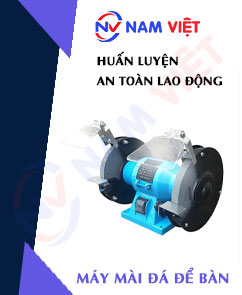
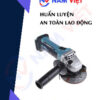
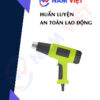



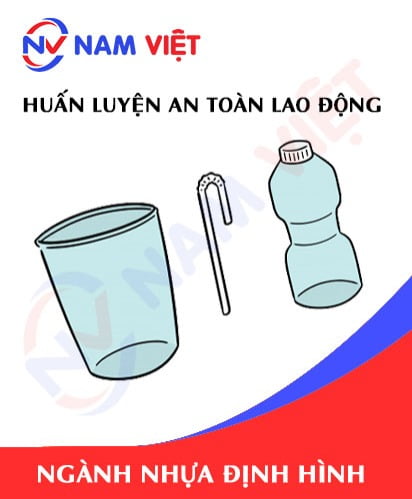
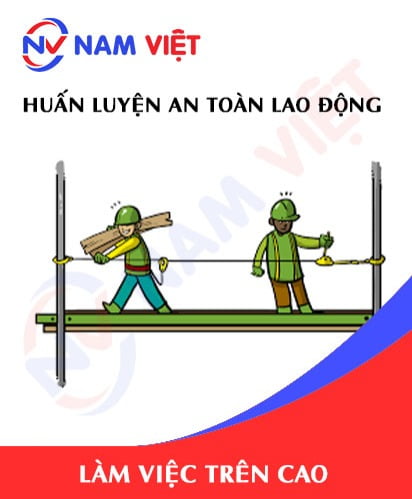

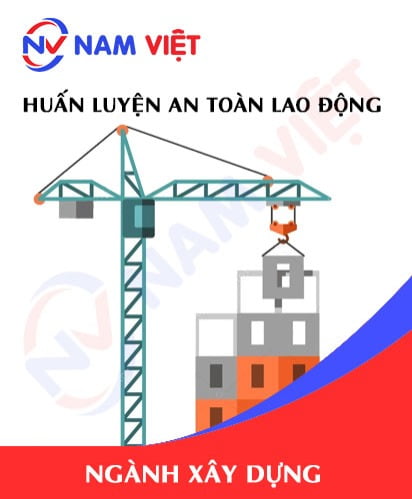
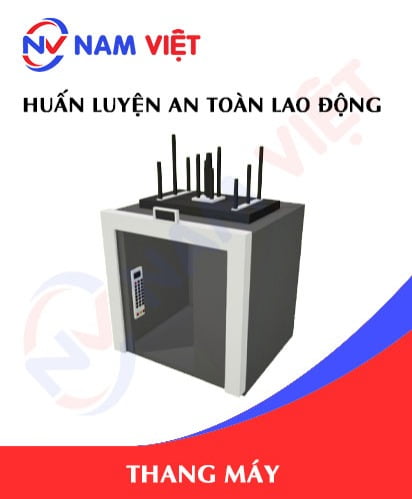
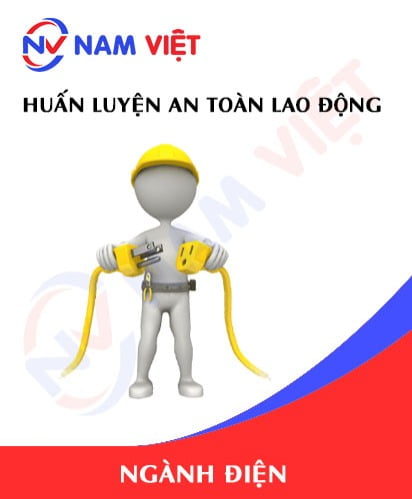


phanminhhang341
Dịch vụ tốt!!!